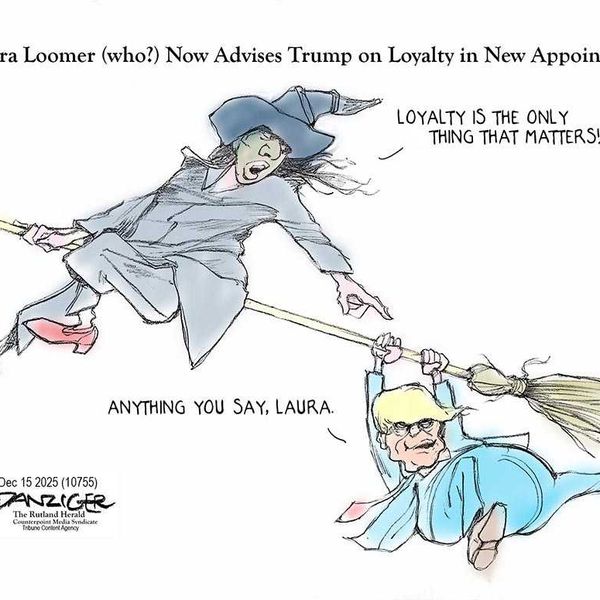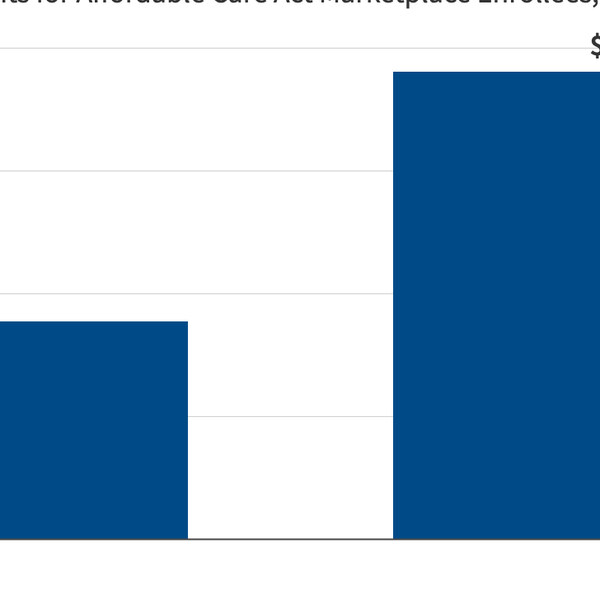Federal Shutdown Drags On As Trump Shows Zero Interest In Ending It

Air traffic controllers working in tower at LaGuardia Airport in New York City
Come Wednesday, we’ll have a new record to celebrate: the longest government shutdown on record. The graph below, from Goldman Sachs Research, is particularly revealing, because the width of the bars show the length, while the height shows how much of the government was affected. The current episode is about to surpass the previous record—the 35 day shutdown in Trump’s first term, from December 18 -- January 19 — but that one affected a far smaller share of the government’s agencies.

It makes perfect sense that Trump would preside over the longest shutdowns, especially Trump 2, given the administration’s authoritarian aspirations, lack of internal opposition to the President’s instincts (less the case in Trump 1), and the false reality in which they cloak themselves, especially regarding the rule of budget law, as I wrote a few days ago.
The extent to which the administration desires to and believes they can legally ignore Congress when it comes to spending appropriations must not be underappreciated. It is a key building block in the monarchical agenda. Even the most compliant, spineless Congressional majority of our lifetimes is too much for the Trump administration to deal with, making shutdowns a welcome environment for them. It also makes this White House a deeply non-trustworthy counterparty in budget negotiations.
The problem Trump and company are facing is that they poorly understand and fully discount the things the government does, along with the extent to which tens of millions of Americans depend on those government services. That reality is starting to bite and it is likely to herald the beginning of the end of the shutdown.
Recall that the last long shutdown ended the afternoon of the morning when the unpaid air-traffic controllers said “we’re done.” Well, “the government shutdown is straining US air travel, with air traffic controller shortages triggering hundreds of flight delays nationwide.” You can see the damage in the aptly named “misery map.”
Though the courts were unequivocal about the admin’s upside-down claim that they couldn’t use the SNAP contingency fund to pay SNAP benefits, there’s still going to be a disruption to nutritional support received by one in eight Americans, many of whom reside in Republican districts. It’s the same story, in terms of constituents, with the higher health care premiums that folks in the ACA exchanges are now officially learning about, an issue that Democrats have closely tied to the shutdown.
The fact that many hundreds-of-thousands of federal workers and contractors are not getting paid is one reason why GS researchers estimate that the current shutdown looks likely to have the greatest economic impact of any shutdown on record. They and others estimate that it will reduce annualized real GDP growth in the current quarter (Q4) but over one percentage point, to be made up in the next quarter.
If I’m right that these forces lead the shutdown to end, as is now expected in the next week or two, it raises at least two questions.
What will be the political fallout from the shutdown? My read of the polls is that most people blame the Republicans more than the Democrats for the shutdown. This is consistent with the fact that it’s usually the party in charge that takes the brunt of the blame. But there’s ample evidence that folks are unhappy with both sides.
Not a pollster, as I’m always quick to point out, but I believe the evidence shows that these shutdowns fade from the general public’s memory pretty quickly, though they leave a bad taste in your mouth. This one is different, however, in many ways, so perhaps it will have more lasting impact. My guess is its longer-term impact will depend on the fate of the ACA tax credits. If Republicans fail to extend them, it’s possible that a lot of people hurt by the increase will remember who was fighting to help them and who was busy bailing out Argentina instead.
What the heck was that all about? Especially given the economic bounce back noted above, why go through this? It’s like going on a starvation diet for six weeks followed by the same period of massive overeating. What’s the freakin’ point?!
The answer is there is no point. It’s the unavoidable consequence of the deep, partisan divide, which has only grown since Newt Gingrich got the bright idea of weaponizing appropriation expirations as a tool to elevate budget fights back in the mid-1990s.
To be clear, this is not a pox on both houses. The Democrats are and should be hard pressed to negotiate with Republicans who not only allow the Trumpies to break legally-binding spending deals, but applaud them for doing so. And the Democrats are right to use what leverage they have here to elevate the spike in healthcare premiums due to the expiration of the ACA premium credits.
It is also absolutely the case that Trump’s disinterest in any negotiation to end the shutdown has extended it. When I was in the Biden administration, we worked hard to prevent numerous pending shutdowns, and we were successful. That can be done, but it takes presidential commitment.
Of course, if a president views a shutdown as a way to further promote his kingliness, he’s going to be a lot less prone to help. As for the rest of us: “let them eat cake.”...
Jared Bernstein is a former chair of the White House Council of Economic Advisers under President Joe Biden. He is a senior fellow at the Council on Budget and Policy Priorities. Please consider subscribing to his Substack.
Reprinted with permission from Econjared.
- Now Republicans Are Using Hunger As A Weapon In Shutdown Fight ›
- Report: Trump Sent Mullin To Deal With Democrats As Shutdown Spooks GOP ›
- New Poll: Public Anger At Republicans Deepens As Shutdown Drags On ›
- 'On Vacation': Jeffries Scorches GOP Leaders For Fleeing Town During Shutdown ›
- 5 Awful Effects Of The Government Shutdown ›
- Despite Frustrating End, Democrats Can Still Build A Victory From 40-Day Shutdown - National Memo ›








